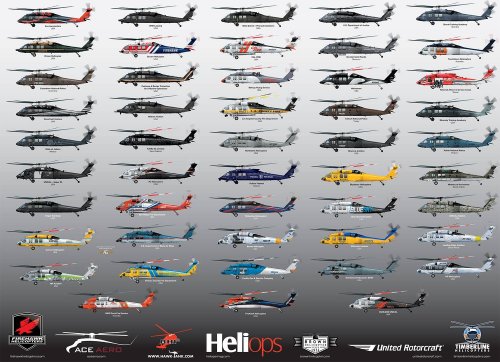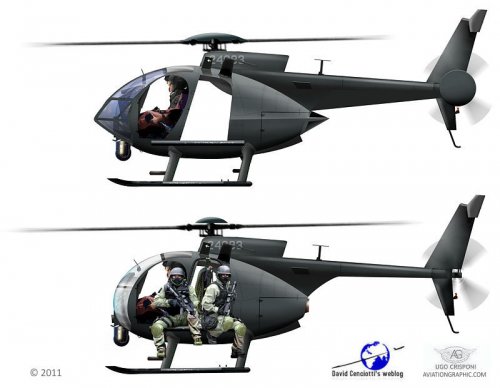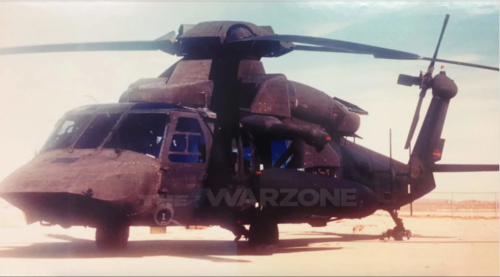This is the narrative so far:
* 24 in the primary assault group
* 80 "commandos" total. Not clear if this includes aircrew on the MH-47, CSAR assets, etc. Likely includes the 24 in the primary assault force.
* Force included tactical SIGINT (ISA), collection team, and "navigators"
* Assault launched from either Jalalabad, Afghanistan, or Ghazi, Pakistan. "Official" reporting is Afghanistan, but it is still possible that it was launched from Ghazi.
* 2 MH-47s as "backup"
* 2 "Modified blackhawks" for the primary assault force. The "modified blackhawks" may be conventional news outlets sourcing a AvWeek story which sources SPF.
* After the loss of 1 assault helicopter, the aircraft was demolished and the orphaned assaulters used one of the MH-47s for exfil.
So given the above, the two "stealth helicopters" flew in with some very unstealthy MH-47s. If the assault launched out of JBad, the SHHHHHH-60s would likely have refueled at some point. A stealthy in flight refueling boom would be an interesting challenge, but a FARP is another possibility.
Given the number of persons in the assault force, and the requirements to conduct an assault like this, the transport capacity seems thin. Since the lessons of EAGLE CLAW US special operations forces have not made it a practice to under resource an assault. It's likely there were more backup assets, that the helicopters were not near max capacity, and that there was replication within the assault force. The loss of an assault helicopter (and its operators) was almost certainly planned for, so it's possible there were additional SHHHHHH-60s. On the ground observers only saw/heard 4 helicopters, though obviously this is not very reliable information. They were stealth helicopters

There are a few possible organizations that could operate a SHHHHHH-60:
* AFSOC
* TF160
* JSOC Aviation SMU(s)
There are a limited number of places you could realistically flight test a low observable helicopter:
* NTS
* Eglin AFB
* Pax river
Specifically for this assault there were two training locations set up, one in the Western US and one in the Eastern US. It's likely that this was NTS and Eglin, but could have been several other locations (China Lake, Chocolate Mountains, Ft. Campbell, Ft. Bragg). A mockup of the compound was also constructed at Bagram. NTS and Eglin have both been used for this type of rehearsal several times in the past.
A helicopter that has a reduced radar signature is an interesting challenge, and very different from a fixed wing aircraft.




